![A Star Is Born [1954]](/pictures/1049492.jpg) A Star Is Born | DVD | (09/10/2006)
from £N/A
| Saving you £N/A (N/A%)
| RRP
A Star Is Born | DVD | (09/10/2006)
from £N/A
| Saving you £N/A (N/A%)
| RRP 'A Star Is Born' marked Judy Garland's return to movies after a four year absence director George Cukor's first musical and first colour film and a showcase for the great Harold Arlen/Ira Gershwin songs in state-of-the-art stereo. One of the most beloved show business stories of all time it represents a career peak for many involved. Garland is singer Esther Blodgett an undeniable talent on the rise. She catches the eye of Norman Maine (James Mason) an alcoholic actor in a career decline. Their intense love transforms them both. Only one will survive Hollywood's slings and arrows... Shortened after its premiere the movie underwent one rebirth in 1983 when film historian Ronald Haver found almost all the cut sequences and supervised a reconstruction to near its original length. Its rebirth on DVD is includes a breathtaking digital surround stereo track and incorporates picture and musical material found in Warner Bros' vaults.
![Batfink Vol.3 [1967]](/pictures/1069280.jpg) Batfink Vol.3 | DVD | (09/04/2007)
from £8.08
| Saving you £-2.09 (N/A%)
| RRP
Batfink Vol.3 | DVD | (09/04/2007)
from £8.08
| Saving you £-2.09 (N/A%)
| RRP ""Together we can make the world a safer place!"" Batfink the crime-busting superhero with his supersonic sonar-radar and infamous wings of steel is on a mission to make the world a safer place. With his powerful yet unavailing sidekick Karate Batfink must battle against his arch villains Hugo A Go Go Gluey Louie The Skinny Minnie Gang and many more in the fight against evil! This timeless cartoon a spoof of the famously campy Batman television series was a favourite in the early 1980s.
![La Fanciulla del West [1963]](/pictures/1089318.jpg) La Fanciulla del West | DVD | (04/11/2008)
from £27.94
| Saving you £-2.95 (N/A%)
| RRP
La Fanciulla del West | DVD | (04/11/2008)
from £27.94
| Saving you £-2.95 (N/A%)
| RRP 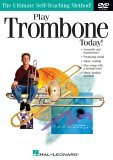 Play Trombone Today | DVD | (04/12/2006)
from £9.77
| Saving you £3.22 (24.80%)
| RRP
Play Trombone Today | DVD | (04/12/2006)
from £9.77
| Saving you £3.22 (24.80%)
| RRP Master teacher and performer John Timmins guides you through all the basics to play the trombone. Specifically designed for the very beginner it covers: parts and assembly of the instrument breathing and posture essentials of producing a good tone and care for your instrument. You'll also learn music reading with notes and rhythms and learn to play your very first melodies right along with a great backup band.
![World War II -The Nuremburg Trials [DVD] [1945]](/pictures/1128389.jpg) World War II -The Nuremburg Trials | DVD | (02/11/2009)
from £17.53
| Saving you £-4.54 (-34.90%)
| RRP
World War II -The Nuremburg Trials | DVD | (02/11/2009)
from £17.53
| Saving you £-4.54 (-34.90%)
| RRP The Nuremberg trials began in 1945 and the film cameras of the victorious Allies were there to record the proceedings. The first documentary film to emerge was the Soviet film account which appeared as soon as the verdicts were given and before the full proceedings had even been completed. As might be expected, the narrative is vengeful, partisan and jingoistic. The ringing accusations of the prosecutors are illustrated by extracts from newsreels. The court room footage, however, provides t...
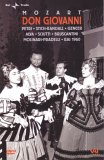 Mozart - Don Giovanni (Molinari-Pradelli) | DVD | (25/04/2005)
from £23.82
| Saving you £4.17 (17.51%)
| RRP
Mozart - Don Giovanni (Molinari-Pradelli) | DVD | (25/04/2005)
from £23.82
| Saving you £4.17 (17.51%)
| RRP Mozart - Don Giovanni (Molinari-Pradelli)
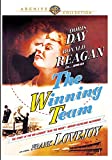 WINNING TEAM - WINNING TEAM (1 DVD) | DVD | (11/07/2017)
from £N/A
| Saving you £N/A (N/A%)
| RRP
WINNING TEAM - WINNING TEAM (1 DVD) | DVD | (11/07/2017)
from £N/A
| Saving you £N/A (N/A%)
| RRP  Sings Songs of the Mystics Vol. 2 | DVD | (27/02/2012)
from £15.65
| Saving you £-9.66 (-161.30%)
| RRP
Sings Songs of the Mystics Vol. 2 | DVD | (27/02/2012)
from £15.65
| Saving you £-9.66 (-161.30%)
| RRP Recorded Live at The Royal Festival Hall London 30th May 2000.Abida Parveen is feted as heir to the crown of the late Qawwali legend Ustad Nusrat Fateh Ali Khan. For over a decade her golden voice has swept audiences into trance with scintillating renderings of devotional ecstatic Sufi mystic poetry. She is the only female Muslim exponent of devotional music and the only woman allowed to sing at the shrines of the Sufi saints. Singing mainly in Urdu Sindhi Hindi Punjabi and Seraiki her beautiful uplifting music transcends all linguistic boundaries and she performs all over the world to people of all creeds.
![Motor Cycle Sport 1956 [DVD]](/pictures/1131095.jpg) Motor Cycle Sport 1956 | DVD | (09/08/2010)
from £12.89
| Saving you £7.10 (55.08%)
| RRP
Motor Cycle Sport 1956 | DVD | (09/08/2010)
from £12.89
| Saving you £7.10 (55.08%)
| RRP Motor Cycle Sport 1956
![This Happy Breed [1944]](/pictures/1086276.jpg) This Happy Breed | DVD | (15/09/2008)
from £N/A
| Saving you £N/A (N/A%)
| RRP
This Happy Breed | DVD | (15/09/2008)
from £N/A
| Saving you £N/A (N/A%)
| RRP This Happy Breed' is a splendidly acted classic portraying how an ordinary British family lived between the wars. Just after WWI the Gibbons family moves to a nice house in the suburbs. The inhabitants of 17 Sycamore Road are ordinary people with their irritable in-laws their just plain folks camaraderie and their unshakeable belief that no matter how hard the times are Mother England is forged of good stock and common sense will somehow prevail. This is a wonderful adaptation of Noel Coward's play written by Anthony Havelock-Allan and directed by David Lean who brought us the critically acclaimed classic 'Brief Encounter'.
![The General [1927]](/pictures/1013338.jpg) The General | DVD | (22/10/1999)
from £N/A
| Saving you £N/A (N/A%)
| RRP
The General | DVD | (22/10/1999)
from £N/A
| Saving you £N/A (N/A%)
| RRP Buster Keaton's career reached its creative apex with this rousing comic adventure. Not merely one of the finest silent films, this remains one of the great film comedies of all time. The Great Stone Face stars as Southern railroad engineer Johnny Gray, a man with only two loves: the sweet Annabelle Lee (Marion Mack) and his trustworthy engine, the eponymous General. When Fort Sumner is fired upon he is one of the first to enlist, but when the war office rejects him (he's too valuable as a trained engineer) his sweetie rejects him as a coward. Johnny has the opportunity to prove his bravery when Yankee spies steal his engine and inadvertently kidnap Annabelle, and Johnny pursues with all the resources at his disposal: handcar, bicycle and finally railroad engine. Keaton's love/hate relationship with technology and machinery shines as he becomes one with his beloved locomotive and wrestles with a finicky cannon that threatens to blow his engine off the tracks; with tremendous dexterity, he nails the humour with inimitably deadpan takes. Spunky Marion Mack makes a perfect partner for Keaton, not merely a foil but a gifted comedienne in her own right. Other Keaton films contain more laughs and inspired comic stunts, but none combines romance, adventure and comedy into a solid story as seamlessly as this silent masterpiece. --Sean Axmaker, Amazon.com
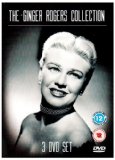 Ginger Rogers Collection | DVD | (14/04/2008)
from £N/A
| Saving you £N/A (N/A%)
| RRP
Ginger Rogers Collection | DVD | (14/04/2008)
from £N/A
| Saving you £N/A (N/A%)
| RRP The Ginger Rogers Collection (3 Discs)
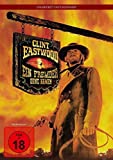 EASTWOOD,CLINT - EIN FREMDER OHNE NAMEN (UNCUT) (1 DVD) | DVD | (19/01/2018)
from £N/A
| Saving you £N/A (N/A%)
| RRP
EASTWOOD,CLINT - EIN FREMDER OHNE NAMEN (UNCUT) (1 DVD) | DVD | (19/01/2018)
from £N/A
| Saving you £N/A (N/A%)
| RRP ![Doctor Who : Spearhead From Space [1970]](/pictures/1073672.jpg) Doctor Who : Spearhead From Space | DVD | (02/07/2007)
from £N/A
| Saving you £N/A (N/A%)
| RRP
Doctor Who : Spearhead From Space | DVD | (02/07/2007)
from £N/A
| Saving you £N/A (N/A%)
| RRP Forbidden to continue his travels through time and space by his fellow Time Lords the newly regenerated Doctor begins his exile on Earth and finds himself hurled into one of his most exciting and terrifying adventures. But the Doctor is not the only alien intelligence arriving on the planet. A shower of mysterious meteorites signals the coming of the Nestene Consciousness - an evil cosmic collective being with just one goal - total conquest of Earth. The Nestenes possess a specia
![The Longest Day (Classic Collection Box Set) [1962]](/pictures/1001509.jpg) The Longest Day (Classic Collection Box Set) | DVD | (31/05/2004)
from £N/A
| Saving you £N/A (N/A%)
| RRP
The Longest Day (Classic Collection Box Set) | DVD | (31/05/2004)
from £N/A
| Saving you £N/A (N/A%)
| RRP On June 6 1944 the Allied Invasion of France marked the beginning of the end of Nazi domination over Europe. The attack involved 3 000 000 men 11 000 planes and 4 000 ships comprising the largest armada the world has ever seen. The Longest Day is a vivid hour-by-hour re-creation of this historic event. Featuring a stellar international cast and told from the perspectives of both sides it is a fascinating look at the massive preparations mistakes and random events that determined the outcome of one of the biggest battles in history. Winner of two Oscars (Special Effects and Cinematography) The Longest Day ranks as one of Hollywood's truly great war films.
![Freaks [1932]](/pictures/1013213.jpg) Freaks | DVD | (20/10/2000)
from £N/A
| Saving you £N/A (N/A%)
| RRP
Freaks | DVD | (20/10/2000)
from £N/A
| Saving you £N/A (N/A%)
| RRP One of the most famous, most shocking and, for much of its existence, most elusive of cult films, Tod Browning's Freaks remains worthy of its dubious top billing by literary critic Leslie Fiedler as the greatest of all Freak movies. At the centre of the story are two circus midgets, Hans and Frieda (already well known in the 1930s through film and advertising appearances as Harry and Daisy Earles), whose marriage plans are blasted when Hans becomes the target of the aerialist Cleopatra's plot to marry him then kill him off for his money. During what is certainly one of the most notorious scenes in cult film history, the wedding party of freaks ritually embrace Cleopatra as one of us. Through her undisguised horror at this and her gruesome punishment by the freaks, the film bluntly confronts viewers about our awkwardness about different bodies while simultaneously stirring up fear and alarm in familiar horror-movie style. Better known for the Bela Lugosi version of Dracula (1931), Brownings showmanship was equally a product of the circus (he was himself an adolescent contortionist in a travelling show). His meshing of circus and cinema--two dangerous entertainments--produces Freaks' uniquely disquieting effect.Startled and indignant preview audiences forced the producers to add an explanatory foreword to the film but even this crackles with sensationalism as it veers between sideshow-style sympathy and fright warning. None the less, protests and local censorship ensued and the film never reached the mass audience for which it was made. Still, some of the real stars of the midway Ten-in-One shows of the 1920s and 30s (Johnny Eck, Daisy and Violet Hilton the Siamese twins, Prince Randian, the Hindu Living Torso) are showcased here as themselves and it is their undeniably real presence in what is otherwise familiar fictional terrain which is still so provocative. --Helen Stoddart
![Scarlet Street [1946]](/pictures/1012149.jpg) Scarlet Street | DVD | (17/11/2003)
from £11.80
| Saving you £-6.81 (N/A%)
| RRP
Scarlet Street | DVD | (17/11/2003)
from £11.80
| Saving you £-6.81 (N/A%)
| RRP In a way, Scarlet Street is a remake. It's taken from a French novel, La Chienne (literally, "The Bitch") that was first filmed by Jean Renoir in 1931. Renoir brought to the sordid tale all the colour and vitality of Montmartre; Fritz Lang's version shows us a far harsher and bleaker world. The film replays the triangle set-up from Lang's previous picture, The Woman in the Window, with the same three actors. Once again, Edward G Robinson plays a respectable middle-aged citizen snared by the charms of Joan Bennett's streetwalker, with Dan Duryea as her low-life pimp. But this time around, all three characters have moved several notches down the ethical scale. Robinson, who in the earlier film played a college professor who kills by accident, here becomes a downtrodden clerk with a nagging, shrewish wife and unfilled ambitions as an artist, a man who murders in a jealous rage. Bennett is a mercenary vamp, none too bright, and Duryea brutal and heartless. The plot closes around the three of them like a steel trap. This is Lang at his most dispassionate. Scarlet Street is a tour de force of noir filmmaking, brilliant but ice-cold. When it was made the film hit censorship problems, since at the time it was unacceptable to show a murder going unpunished. Lang went out of his way to show the killer plunged into the mental hell of his own guilt, but for some authorities this still wasn't enough, and the film was banned in New York State for being "immoral, indecent and corrupt". Not that this did its box-office returns any harm at all. On the DVD: sparse pickings. There's an interactive menu that zips past too fast to be of much use. The full-length commentary by Russell Cawthorne adds the occasional insight, but it's repetitive and not always reliable. (He gets actors' names wrong, for a start.) The box claims the print's been "fully restored and digitally remastered", but you'd never guess. --Philip Kemp
![Doctor Who : Rememberance Of The Daleks [1988]](/pictures/1073678.jpg) Doctor Who : Rememberance Of The Daleks | DVD | (02/07/2007)
from £N/A
| Saving you £N/A (N/A%)
| RRP
Doctor Who : Rememberance Of The Daleks | DVD | (02/07/2007)
from £N/A
| Saving you £N/A (N/A%)
| RRP ""Doctor my men have just put three highly explosive grenades into a confined area. Nothing remotely human could have survived that."" But as the Doctor informs Group Captain Gilmore the hostile agressor which has already killed one of his men is not remotely human. For London in 1963 is to be the alloted place and time for a further encounter between the Doctor and his most feared enemy - the Daleks. Accompanied by a streetwise teenager from the 1980's called Ace the Doctor must
![Laurel Hardy 4 Disc Set [DVD]](/pictures/1096202.jpg) Laurel Hardy 4 Disc Set | DVD | (19/10/2009)
from £N/A
| Saving you £N/A (N/A%)
| RRP
Laurel Hardy 4 Disc Set | DVD | (19/10/2009)
from £N/A
| Saving you £N/A (N/A%)
| RRP March of the Wooden Soldiers Evil old Silas Barnaby threatens to evict Widow Peep who lives in a shoe unless she lets him marry her daughter Bo-Beep who is in love with the dashing young Tom-Tom. Silas seeks revenge by banishing Tom-Tom to Bogeyland but with the help of Stan Ollie and a mouse Tom-Tom and Bo-Peep are saved and the monsters of Bogeyland chased out of Toyland. Flying Deuces Stan and Ollie are holidaying in Paris. Ollie intends to remain in France to marry Georgette (Jean Parker) the innkeeper's daughter but she refuses his proposal. Ollie decides instead to jump into the Seine along with Stan but Fran''ois (Reginald Gardiner) a Foreign Legion officer who is actually Georgette's husband offers an alternative. Utopia The last film Laurel and Hardy made together Stan and Ollie fly to London for the reading of Stan's late uncle's will. After Stan's uncle's cash is used to pay the solicitors death duties and tax the only things left are a yacht--and a South Sea island. Hilarious hijinks ensue... Disc 4 also includes Hustling for Health One Too Many and The Lucky Dog
![Horror Hotel [1960]](/pictures/1008225.jpg) Horror Hotel | DVD | (29/03/2004)
from £N/A
| Saving you £N/A (N/A%)
| RRP
Horror Hotel | DVD | (29/03/2004)
from £N/A
| Saving you £N/A (N/A%)
| RRP 
Please wait. Loading...
This site uses cookies.
More details in our privacy policy